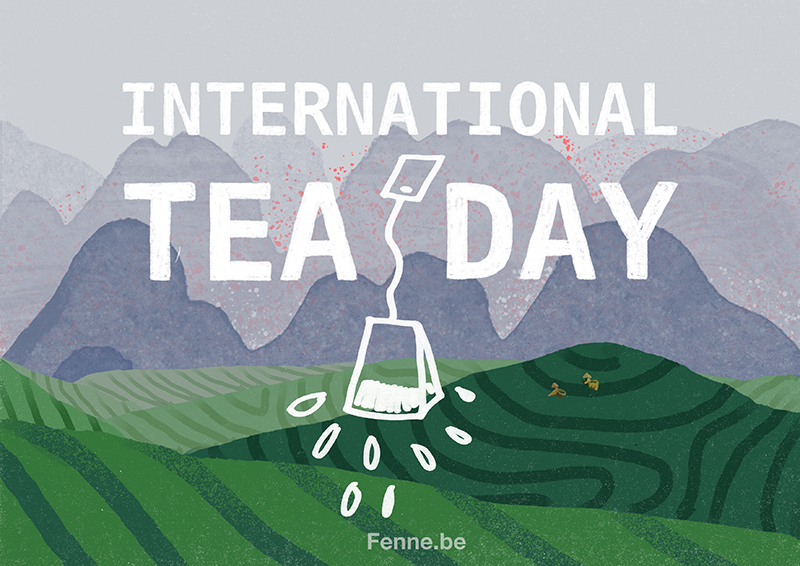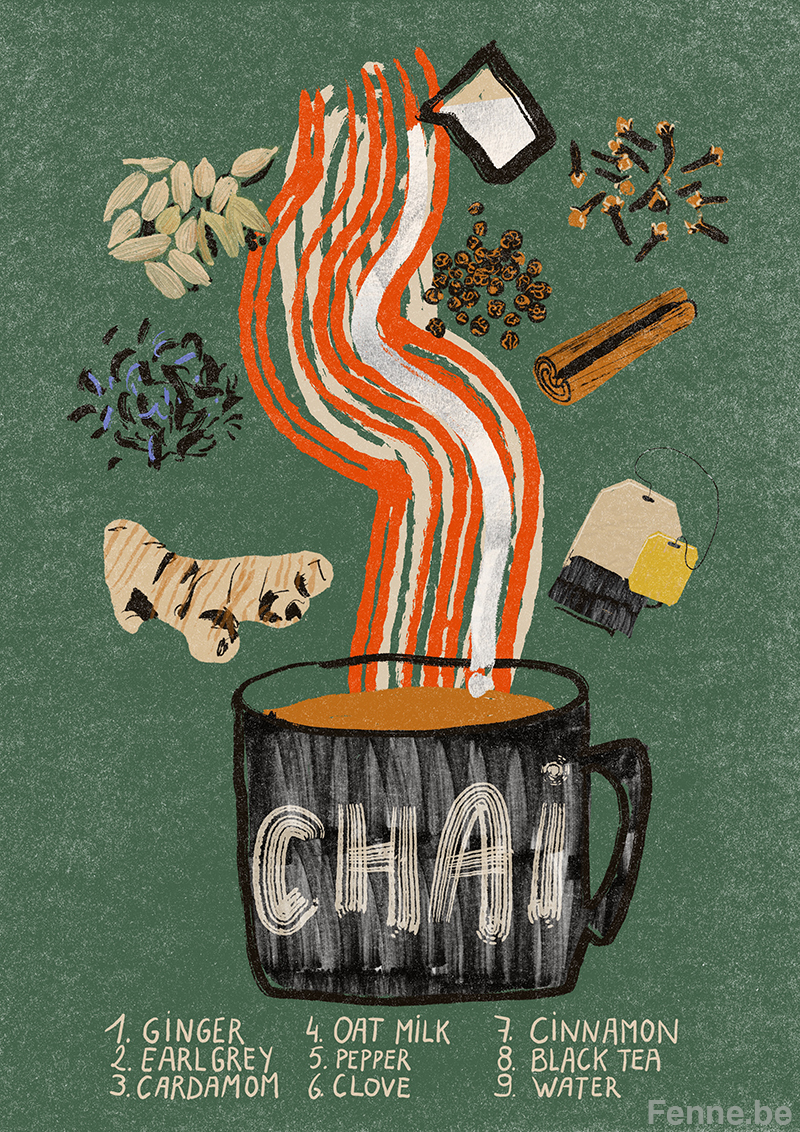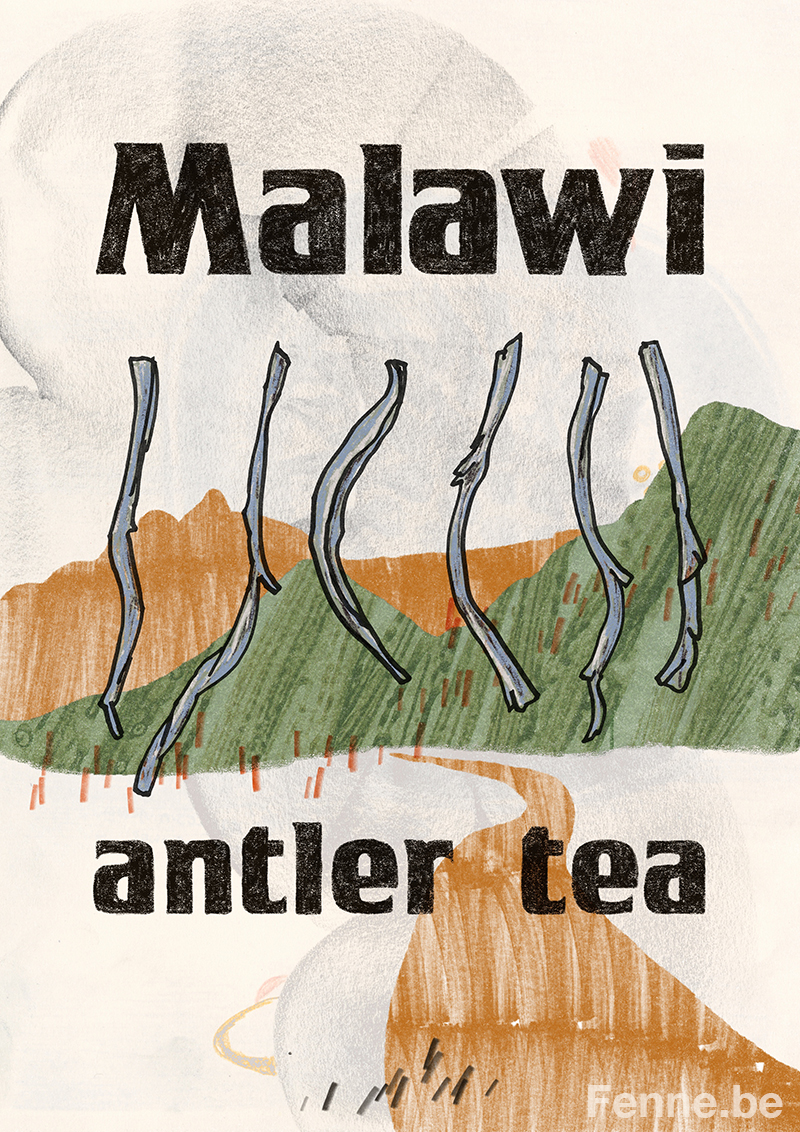International Tea Day

I am a tea lover,
but only recently I started to learn more about the fascinating world of tea.

My journey is deliberately slow, and while I’m far from any tea-wisdom, International Tea Day seems a perfect moment to share the joy of exploring a new field.
The approach to tea is a personal one that starts with memories of moments and emotions of drinking warm tea when sick or sharing a cup of fruity tea with friends on a cold autumn evening. Over the years, different flavors were added to specific moments, but more than any other beverage, tea has a way to press the pause button.
Whether it’s after a freezing cold walk or on a hot summer day, the process of making the tea and sitting down to take a sip,… it’s almost a ritual that calms the mind and creates space to slow down for a moment.
How to start.
The first modest step to learn more was watching “The story of tea”, a documentary on Netflix that takes you all the way from the beginning, from the leaves, through the process, to different ways people drink their tea all over the world. From sellers on the road to posh men in suits drinking tea from (what looks like) wine glasses.
After watching the documentary, I got a book (Theegeheimen from Dille & Kamille). Nothing fancy, just a nicely done book with nice photographs about the basics: what is tea, how to make it, some well-known types and examples, and a hint on how to pair it with food. From that book, I made a list of a few teas that I wanted to try.
With that (rather ambitious) list, I went to a tea shop in Mortsel, Belgium. In order to try as much as possible (knowing I wouldn’t be able to go there again in months), I ordered the smallest amount of every tea- which is still plenty!
For my list, I narrowed it down to the basics: white, green, yellow, Pu-erh, black, and Oolong, and considered the descriptions of the tea book about the specific flavors. I know that as a beginner, my taste palette isn’t that sophisticated, but it helps to recognize and learn + finding flavors that are a good match.
The teas that I/we chose:
– Yellow Huang long: yellow tea from China, steamed leaves.
– Pu Erh: Black tea from Yunnan, China. Fermented tea.
– Milky Oolong: Jin Xuan tea from Taiwan.
– Earl Grey Darjeeling: Black Darjeeling from India, with Bergamot oil.
– Jasmine Pearls: Green tea with jasmine flowers from Fujian, China. Rolled like pearls.
– Paï Mu Tan: White tea from Fujian, China. Hand-picked first and second top spring leaves.

At the moment, the Yellow Huang Long and Paï Mu Tan are my favorites. The Milky Oolong has the most fascinating scent and rich taste, but it can be a challenge to get it exactly as I like it the most. The earthy Pu Erh is a type of tea that I have to get used to, but I might not buy it again unless I find some food that matches it perfectly.
A big part of getting the flavor right, apart from using the right amount, is using the right temperature of the water. No more carelessly boiling water and pouring it all over whatever is in the cup. Next to my tea collection, I now have a ‘cheat sheet’ with the optimal temperature for each tea (along with how much to use, how many times you can use it again, and other info).
Since I drink these teas without milk/sugar/honey, and I’m not diffusing the taste, it has to be more or less right. There is one exception though: ‘Friday Chai!’
Mostly during the cold and dark winter months, we’re having our own version of Fredagsmys (cozy Friday), often with homemade pizza or oven snacks, and a movie. And for that evening, we often make a big pot of my favorite Chai mix.
Joeri’s Chai tea:
Ingredients:
– 1 – 2 cinnamon sticks
– 2 cloves
– 12 black peppercorns
– 10 whole cardamom pods
– 1.5-liter water
– 0.5-liter oat milk
– 2 tablespoons of Earl Grey black tea
– 2 bags of Lipton yellow label tea
Preparation:
Bring the water to the boil. Crush the spices with a pestle and mortar. Once the water boils, add the milk and turn down the heat and let it simmer. Add the spices, loose tea as well as the 2 tea bags, and let the mixture steep for at least 10 min (but preferably a LOT longer).
Tip: To avoid a lot of filtering, put all the spices and tea in a large tea filter into the pot.

So, what’s next?
The number one tea that I would love to try one day, is Malawi antler tea. It’s a white tea that is made from the stems of spring shoots instead of the leaves, capturing a unique flavor, apparently, that also changed with each infusion. The tea is quite rare as the average production per field is about 60kg/year.
PS: Did you know that while China and India dominate the tea market, the fastest-growing markets are Malawi, Uganda, and Rwanda?
